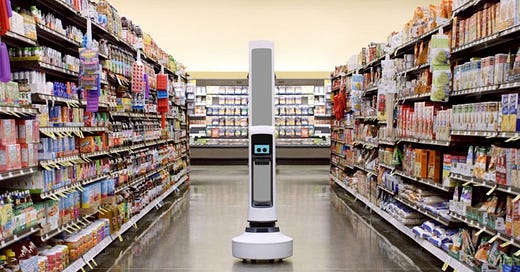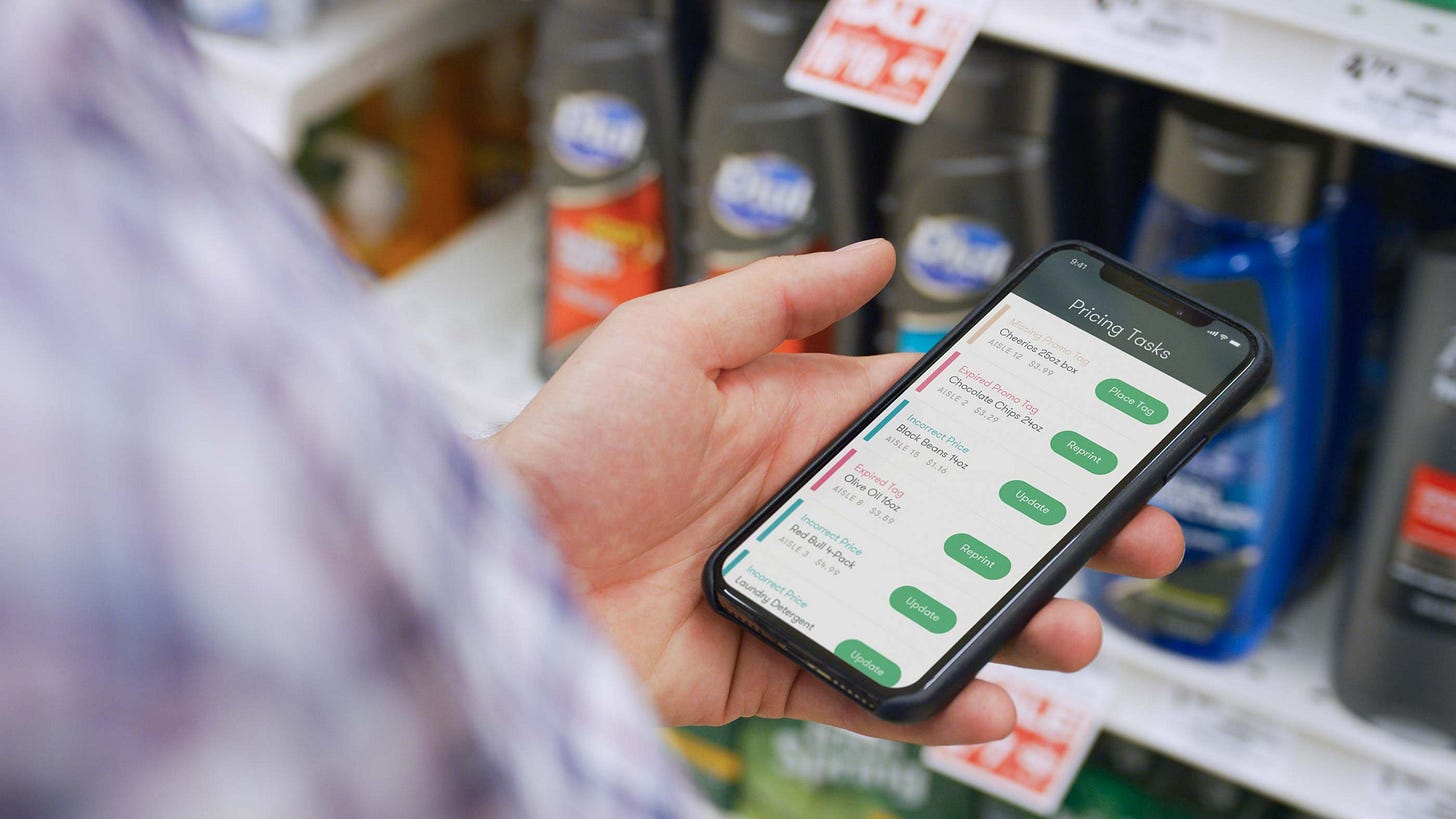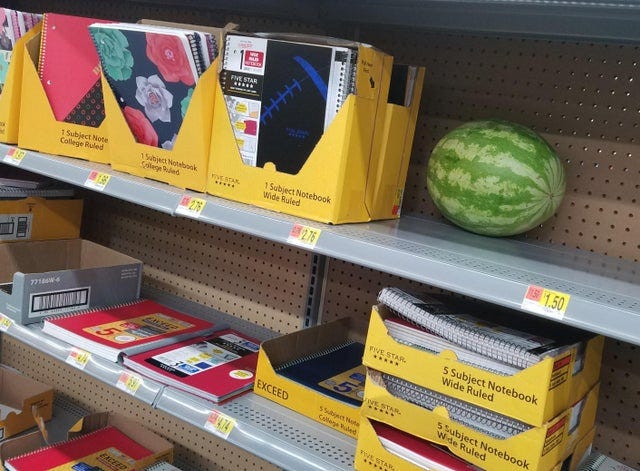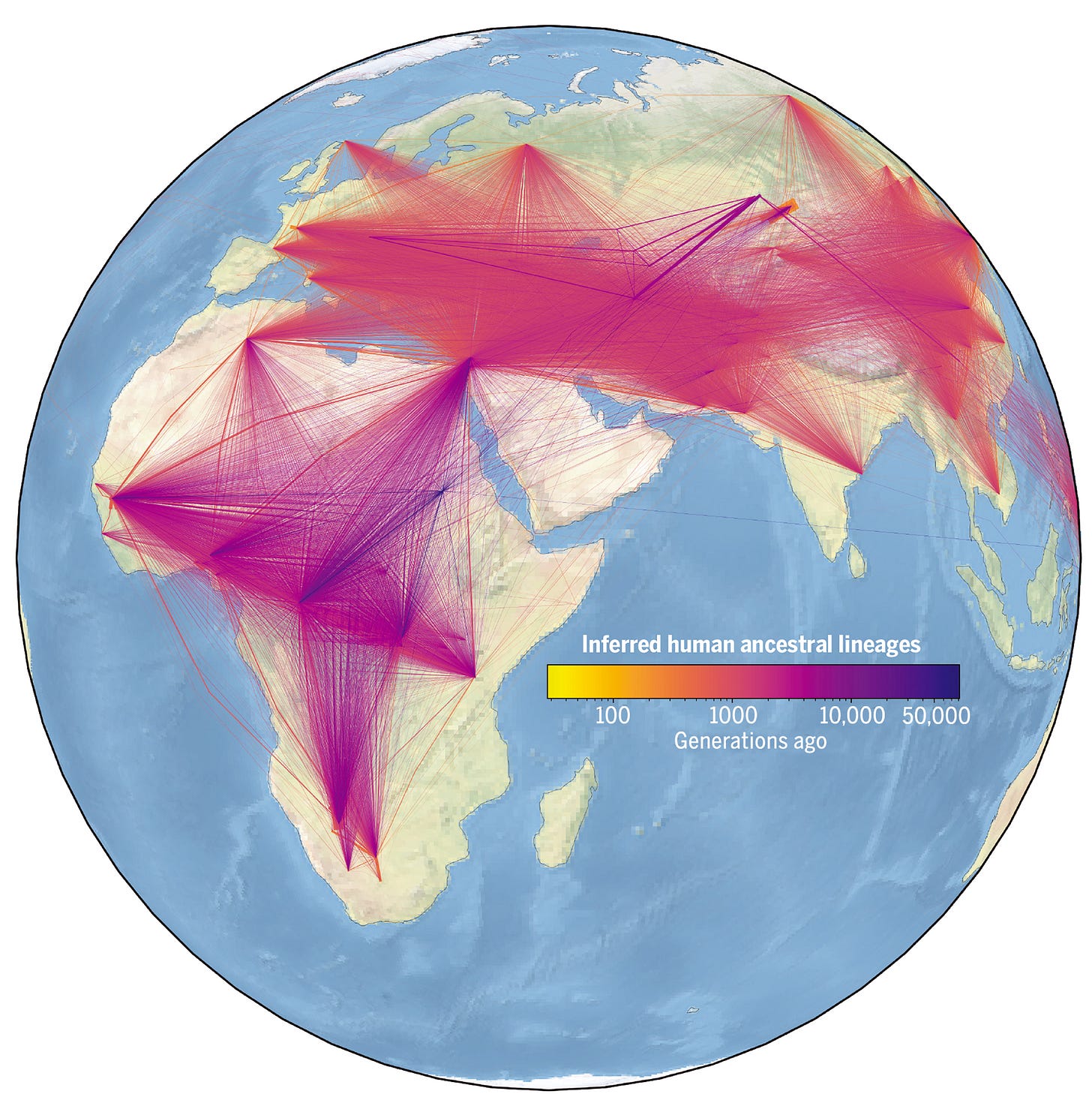Year 2049 is a weekly newsletter that discusses the impactful innovations and discoveries shaping our future across all aspects of life.
If this was forwarded to you, subscribe for free to get a new story in your inbox every Friday.
Today’s Edition
Comic: Life decisions at the grocery store
Story: The robot helping stores automate tedious tasks
Visualization: Mapping the most extensive human genealogy to date
Comic
Story
Inventory tracking is… annoying
Every physical store has to keep track of its inventory.
While their point of sale (POS) systems can give them a good idea of how many lightbulbs or Doritos bags they still have in stock, it’s never perfectly reliable.
Manual counts have to be made to ensure consistency between the inventory system and what the store actually has. The frequency of these checks varies and can be done on a monthly, quarterly, or yearly basis depending on the store.
These cyclical checks may still not be enough. I’ve been in multiple situations where I checked the in-store stock for something online only to find myself staring at an empty shelf when I got there.
Maintaining accurate information about their inventory helps stores in many ways:
Ensuring timely stock replenishment: knowing what’s still in stock, running low, or completely out helps the store make purchase orders in a more timely manner.
Ensuring pricing and promotion consistency: making sure that prices and discounts are displayed correctly to avoid any customer confusion and potential loss of revenue.
Tracking misplaced or stolen items: while the POS system can track what was sold, it’s harder to track what items have been misplaced or stolen.
Reporting inventory for tax purposes: tracking inventory is one of the important items on a company’s balance sheet. And we all want to stay on the (insert your country’s revenue agency)’s good side.
Meet Tally
Simbe Robotics is combining robotics and computer vision to help make retailers’ lives easier.
They created Tally, an autonomous robot that can roam the aisles of a store, scan the shelves, and give store employees and managers valuable insights.
More frequent checks: Tally can conduct 3 store audits per day and sends a report to the store manager or compliance lead. According to Simbe, Tally captures 15,000 to 30,000 products per hour with 99% accuracy.
No supervision: once the store is mapped and the audit times are programmed, Tally can leave and return to its charging station on its own. If anything goes wrong, Simbe’s team can fix software issues remotely or send one of their engineers for physical repairs.
What can Tally do?
#1: Detecting out-of-stock items
Tally can detect up to 10x more out-of-stock items than manual checks, according to Simbe. In the image below, Tally’s scans highlight empty areas on the shelf in pink (missing facings) and which items are starting to run low in blue (out on shelf).
#2: Ensuring pricing and promotion consistency
Tally is equipped with sensors and cameras that can scan different types of price tags and barcodes to ensure the right prices and promotions are displayed to customers. Store employees are alerted if there are any discrepancies.
#3: Detect misplaced or missing inventory
If an item has been misplaced, Tally can alert store employees to put it back on the right shelf. It can also integrate with a store’s POS to detect if any items have been stolen.
#4: Shelf display insights
Stores create “planograms” to plan and optimize how they’re going to display their products on shelves. But it’s hard to track how different configurations of product displays affect sales.
Think of Tally as a tool for physical store analytics: it can highlight which shelves sell the most through store maps with hotspots of popular areas, and even heatmaps for individual shelves.
These insights can help stores measure the impact of product placements and even A/B test different layouts to track the impact on sales.
The future of Tally: reducing food waste?
I came across a patent that Simbe was recently granted.
The patent, titled “Method for tracking and characterizing perishable goods in a store”, was issued on December 14, 2021.
The patent covers functionality that will allow Tally (or another Simbe product) to scan and detect characteristics of perishable goods like fruits and vegetables. More specifically, it can detect levels of ripeness, bruising, and spoilage.
Theoretically, here’s what would happen if Tally is scanning bananas:
Tally scans the bananas
An image of the bananas is uploaded to a database
An algorithm analyzes the image and classifies the items as bananas
Once items in the image have been classified, another algorithm assigns the levels of ripeness, bruising, or spoilage. The algorithm would have been trained on thousands of images of bananas to deduce those characteristics.
One of two things happens next:
The banana falls within the target quality range → no action is needed
The banana falls outside the target quality range (too ripe) → needs replacement
If you prefer a visual, here’s the main figure from the patent application:
If you look at this specific box in the diagram, you’ll notice that the system assigns:
Ripeness percentage
Colour
Number of days to ripe
Damage
💡 Interesting opportunity
This feature creates an opportunity for grocery stores to anticipate and reduce food waste.
For example, if the store still has lots of bananas in stock that will be spoiled within days, they can offer promotions and discounts to customers. The stores may not profit from it, but customers get a great price and everyone can contribute to reducing food waste.
According to the UN, 50% of fruits and vegetables produced globally are wasted each year (UNEP).
I’m excited to see how Simbe Robotics puts this patent into practice. I’ll make sure to provide any updates in future newsletters.
Deep dive
If you enjoyed today’s story, I’ve compiled some additional links to satisfy your curiosity:
All About Planograms and Their Role in Visual Merchandising (Shopify)
Method for tracking and characterizing perishable goods in a store (US Patent Office)
Visualization: Ancestral lineages over time and space
Each line represents an ancestor-descendant relationship in our inferred genealogy of modern and ancient genomes. The width of a line corresponds to how many times the relationship is observed, and lines are coloured on the basis of the estimated age of the ancestor.
Source: Science
If you missed the previous episode
Atom Limbs is bringing the first-ever neurally-controlled prosthetics to market.
You can also check out all previous Year 2049 episodes in chronological order to learn about other impactful innovations in climate, transportation, science, food, and more.
How would you rate this week's edition?

















Having spent a career in and around retailing, I can see huge benefits to store operators - and hence ultimately to customers - in this kind of development.
It enables stores to suffer fewer missing items and to offer better quality product more frequently.
It also adds to effectiveness and efficiency of the behind the scenes logistics. And that all adds up to lower operating costs and lower prices for the customer.
But it doesn’t yet meet a big, costly and never ending challenge faced by store owners which is the human effort needed to get the products from the back room of the store and onto the shelf!! A big task not yet automated.